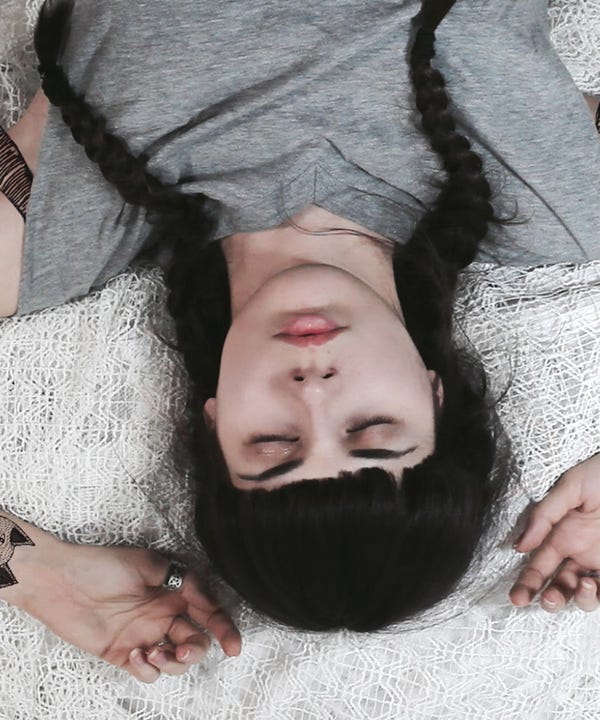 Anyone who's had trouble sleeping knows the wild, even borderline creepy ways a night without shut-eye can affect your body. Designer Petra Švajger's project Parasomniasdepicts the unsettling sensations associated with different sleep disorders in GIF form. They're stark, eerie, and the idea came to her in a completely organic way. In a conversation over email, Švajger says her own battles with sleep inspired her: "It hit me I should just do the series about my lack of sleep." Though her lack of sleep stems from her creative process, she decided to look into other sleep issues, like restless leg syndrome, sleep paralysis, and sleep eating.
Anyone who's had trouble sleeping knows the wild, even borderline creepy ways a night without shut-eye can affect your body. Designer Petra Švajger's project Parasomniasdepicts the unsettling sensations associated with different sleep disorders in GIF form. They're stark, eerie, and the idea came to her in a completely organic way. In a conversation over email, Švajger says her own battles with sleep inspired her: "It hit me I should just do the series about my lack of sleep." Though her lack of sleep stems from her creative process, she decided to look into other sleep issues, like restless leg syndrome, sleep paralysis, and sleep eating.Švajger worked with illustrator Maja Poljanc to enhance the GIFs, explaining that she "wanted to create the contrast between the reality and things that seem real but are not... Maja’s illustrations represent the product of sleep disorders. In some cases, unreal feelings, like crawling sensation on our feet, hallucinations, and more pleasant ones like dreams in REM stage of sleep." This mingling of real images and illustrations emphasizes how surreal sleep disorders can feel, but also how even the "normal" things that happen to us while we sleep are worth exploring. Indeed, Švajger believes there's something inherently mysterious about the phenomenon of sleep, where we walk the line between "states of part consciousness and unconsciousness."
To add context to Švajger's GIFs, I spoke with Rebecca Scott, PhD, a sleep specialist at the New York Sleep Institute. Ahead, she offers her medical perspective on each one of Švajger's dreamy depictions.
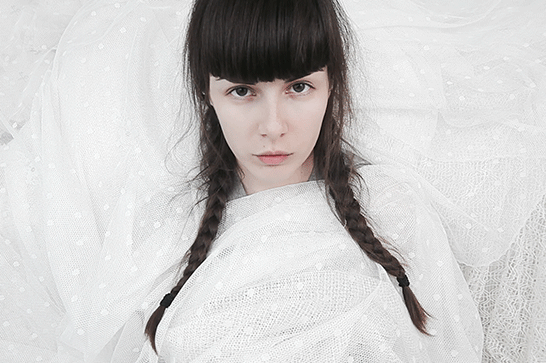
Insomnia
Švajger tells me she has firsthand experience with insomnia, and it shows — Dr. Scott says she "loves" this GIF and finds it highly accurate."
Dr. Scott defines chronic insomnia as when "trouble [sleeping] occurs about three times a week for a period of at least three months, and there is a report of daytime consequences." It's the most common disorder in the series, affecting "20% to 30% of the population."
Not sleeping is a huge problem for every area of your health, so if you're really having trouble seek out a sleep specialist, Dr. Scott adds.
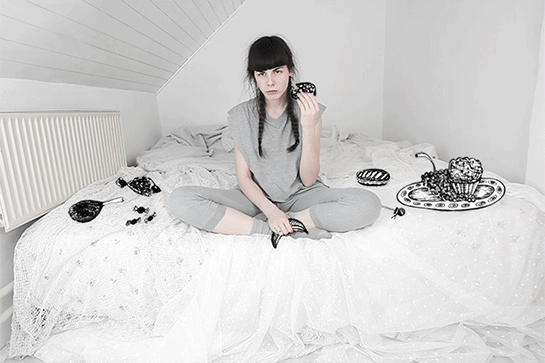
Sleep Eating
This is a disorder that affects about 5% of the population and is actually a form of sleep walking, Dr. Scott explains. "In this case, the person has little to no awareness of the eating behavior in the night. They might awaken in the morning finding evidence of having eaten or prepared food at some point in the night. It usually occurs out of very deep stage III sleep."
Dr. Scott suggests that this GIF may actually be a better representation of night eating syndrome, another problem in which a person has trouble eating during the day and eats throughout the night. In this case, the person is fully aware of their eating habits.
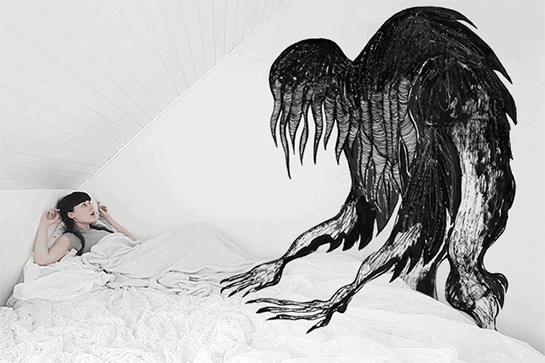
Sleep Paralysis
"The illustration of the monster here represents the imaginary unreal part of a dream disorder,"Švajger tells me.
Dr. Scott adds, "Sleep paralysis is often a very frightening experience and can also be associated with visual, auditory or sensory-motor hallucinations." However, she's quick to clarify, sleep paralysis isn't necessarily something to worry about, as scary as it may feel in the moment. Between 2% and 8% of the general public may experience episodes periodically, though she recommends a consultation with a sleep specialist if their frequency increases — "paralysis can be a symptom of narcolepsy."
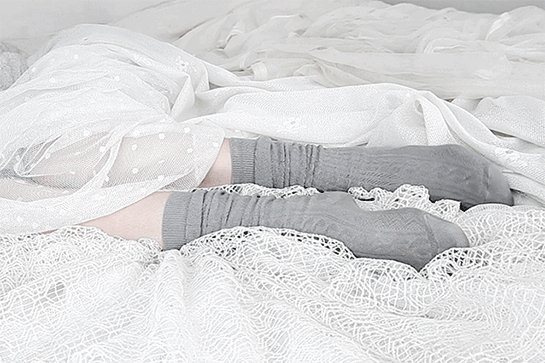
Restless Legs Syndrome (RLS)
Restless legs syndrome is a neurological disorder that causes abnormal, sometimes even painful, sensations in the legs that are only relieved by twitching or moving them. Though people with RLS feel its effects while awake, about 80% deal with the symptoms at night as they're trying to relax, and so these people tend to have trouble falling asleep and staying asleep, says Dr. Scott.
Some patients with RLS describe the sensations exactly as they're depicted in the GIF: "The way her foot flexes is highly consistent with periodic limb movements in sleep." However, "usually RLS is much more dramatic with full kicks of the leg and excessive movement."

Rapid Eye Movement Sleep
This one's not at all a disorder, but instead a necessary part of your body's resting process. Rapid eye movement (REM) sleep is the final stage of our sleep cycle, during which your heart rate and blood pressure increases, after decreasing during deep sleep. If you wake up during REM, you will remember your dreams. Švajger explains that this is one of the more "pleasant" conditions she chose to depict because she found it interesting as another "imaginary or unseen sensation" not unlike the others.
Dr. Scott says the eye movements are the perfect depiction of what's going on inside.
Like what you see? How about some more R29 goodness, right here?
The CDC Is Investigating Palo Alto's Teen Suicide Problem
How Cleaning Up Pigeon Sh*t Helped Me Get Over Myself
The Crazy Way I Found Relief From My Anxiety